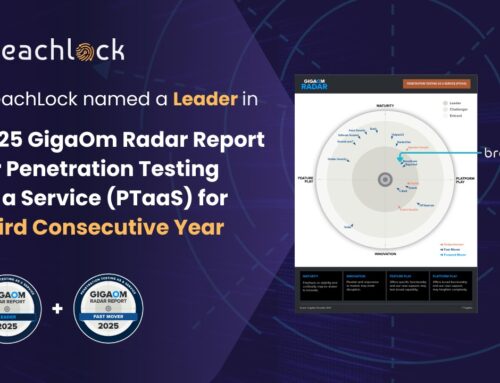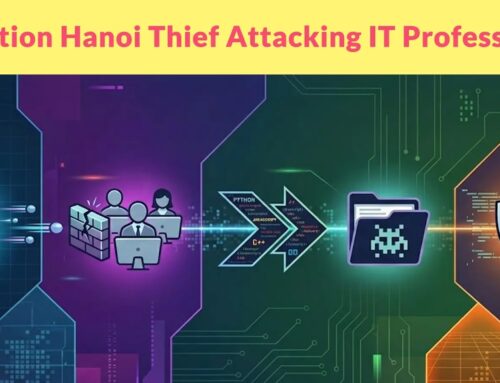
Scattered Lapsus$ Hunters Launched a New Leak Site to Release Data Stolen from Salesforce Instances
The Escalating Threat: How Scattered Lapsus$ Hunters are Targeting Salesforce Data
In the high-stakes world of cybersecurity, the lines between established cybercriminal groups are blurring, leading to more sophisticated and aggressive attacks. A recent alarming development points to a coalescing of formidable threat actors under the moniker “Scattered Lapsus$ Hunters.” This supergroup has significantly escalated its extortion campaign by launching a dedicated leak site, specifically designed to expose data stolen from Salesforce instances. For any organization relying on Salesforce, this represents a critical and evolving threat demanding immediate attention.
Who Are the Scattered Lapsus$ Hunters?
The term “Scattered Lapsus$ Hunters” refers to a powerful new conglomeration of notorious cybercriminal entities. This isn’t a new group in the traditional sense, but rather a fusion of forces comprising well-known threat actors:
- ShinyHunters: Known for extensive data breaches and selling stolen credentials on underground forums.
- Scattered Spider: An agile and opportunistic threat group often linked to SIM-swapping attacks and social engineering.
- Lapsus$: Infamous for their bold ransom and extortion tactics, frequently boasting about their breaches and directly engaging with victims.
This collaboration signifies a troubling evolution in ransomware-as-a-service (RaaS) operations, pooling resources, expertise, and victim lists to maximize impact. Their target focus on Salesforce, a widely adopted customer relationship management (CRM) platform, demonstrates a strategic move to compromise critical business data.
The New Leak Site: A Direct Extortion Tool
The launch of a dedicated leak site by the Scattered Lapsus$ Hunters is a significant tactical shift. Instead of merely encrypting data or holding it for ransom, this site serves as a public declaration of their exploits and a direct threat to expose sensitive information. This strategy aims to:
- Amplify Pressure: Public exposure of stolen data can have severe reputational, financial, and regulatory consequences, compelling victims to pay the ransom.
- Demonstrate Capability: The leak site acts as a chilling testament to their ability to breach high-value targets.
- Create FUD (Fear, Uncertainty, and Doubt): News of such a site can induce panic among potential victims and the broader industry.
For organizations, the risk is no longer just data loss or operational disruption, but public humiliation and potential legal ramifications from leaked customer or proprietary data.
Impact on Salesforce Users and Data Security
Salesforce environments are a treasure trove of sensitive information, including:
- Customer data (personally identifiable information, contact details)
- Sales forecasts and strategies
- Financial records
- Proprietary business processes
A breach and subsequent leak of this data can lead to:
- Regulatory Fines: Non-compliance with data protection laws like GDPR or CCPA.
- Reputational Damage: Loss of customer trust and market standing.
- Competitive Disadvantage: Exposure of trade secrets to rivals.
- Legal Fallout: Lawsuits from affected individuals or entities.
While Salesforce itself employs robust security measures, the Scattered Lapsus$ Hunters often exploit vulnerabilities in interconnected systems, misconfigurations, or social engineering tactics targeting user credentials rather than direct platform flaws. This highlights the shared responsibility model for cloud security.
Remediation Actions for Salesforce Protection
Protecting your Salesforce instances from sophisticated threats like Scattered Lapsus$ Hunters requires a multi-layered and proactive approach. Here are critical remediation actions:
- Implement Strong Multi-Factor Authentication (MFA): Enforce MFA for all Salesforce users, especially administrators. Even if credentials are stolen, MFA acts as a crucial barrier.
- Regular Security Audits and Configuration Reviews: Periodically review your Salesforce security settings, permissions, and sharing rules. Ensure that data access is granted on a “least privilege” basis.
- Employee Security Awareness Training: Educate users about phishing, social engineering, and the importance of strong, unique passwords. Given groups like Scattered Spider’s reliance on social engineering, this is paramount.
- Monitor API Integrations and Connected Apps: Third-party integrations can introduce vulnerabilities. Regularly audit access granted to connected apps and APIs, and revoke access for unused or suspicious integrations.
- Utilize Salesforce Shield: Consider advanced security features offered by Salesforce Shield, such as Platform Encryption, Event Monitoring, and Transaction Security, for enhanced data protection and visibility.
- Implement Endpoint Detection and Response (EDR)/Extended Detection and Response (XDR): Ensure all devices used to access Salesforce have robust security solutions to detect and respond to initial compromise attempts.
- Network Segmentation and Access Controls: Restrict access to Salesforce and related systems from untrusted networks. Implement strict firewall rules and network segmentation.
- Incident Response Plan: Develop and regularly test a comprehensive incident response plan specifically for data breaches involving critical business applications like Salesforce.
- Monitor for Suspicious Activity: Leverage Salesforce’s built-in monitoring tools and external Security Information and Event Management (SIEM) systems to detect unusual login patterns, large data exports, or changes in administrator settings.
Tools for Salesforce Security Monitoring and Assessment
Leveraging the right tools can significantly enhance your ability to secure and monitor your Salesforce environment. While Salesforce provides native security features, external tools can offer deeper insights and broader protection.
| Tool Name | Purpose | Link |
|---|---|---|
| Salesforce Security Health Check | Native Salesforce tool for assessing security settings against baselines. | https://help.salesforce.com/s/articleView?id=sf.security_health_check.htm&type=5 |
| Salesforce Shield | Advanced security features including Platform Encryption, Event Monitoring, and Transaction Security. | https://www.salesforce.com/products/platform/products/shield/ |
| Cloud Access Security Brokers (CASBs) | Monitor and enforce security policies for cloud services like Salesforce, covering data loss prevention, threat protection, and compliance. | (Varies by vendor: e.g., Netskope, Palo Alto Networks, Microsoft Defender for Cloud Apps) |
| Security Information and Event Management (SIEM) | Aggregates security data from various sources, including Salesforce logs, for centralized analysis and threat detection. | (Varies by vendor: e.g., Splunk, IBM QRadar, Microsoft Sentinel) |
| Identity and Access Management (IAM) Solutions | Manages user identities and access privileges across multiple systems, integrating with Salesforce for centralized control. | (Varies by vendor: e.g., Okta, Duo, Azure AD) |
Looking Ahead: The Evolving Threat Landscape
The emergence of the Scattered Lapsus$ Hunters and their targeted leak site is a stark reminder that cyber threats are constantly evolving. The fusion of capabilities from distinct, highly effective cybercriminal groups signals a new era of sophisticated extortion, where technical prowess meets aggressive public shaming tactics. Organizations must remain vigilant, continuously update their security postures, and prioritize proactive defense mechanisms to safeguard their Salesforce environments and, by extension, their invaluable data and reputation.





